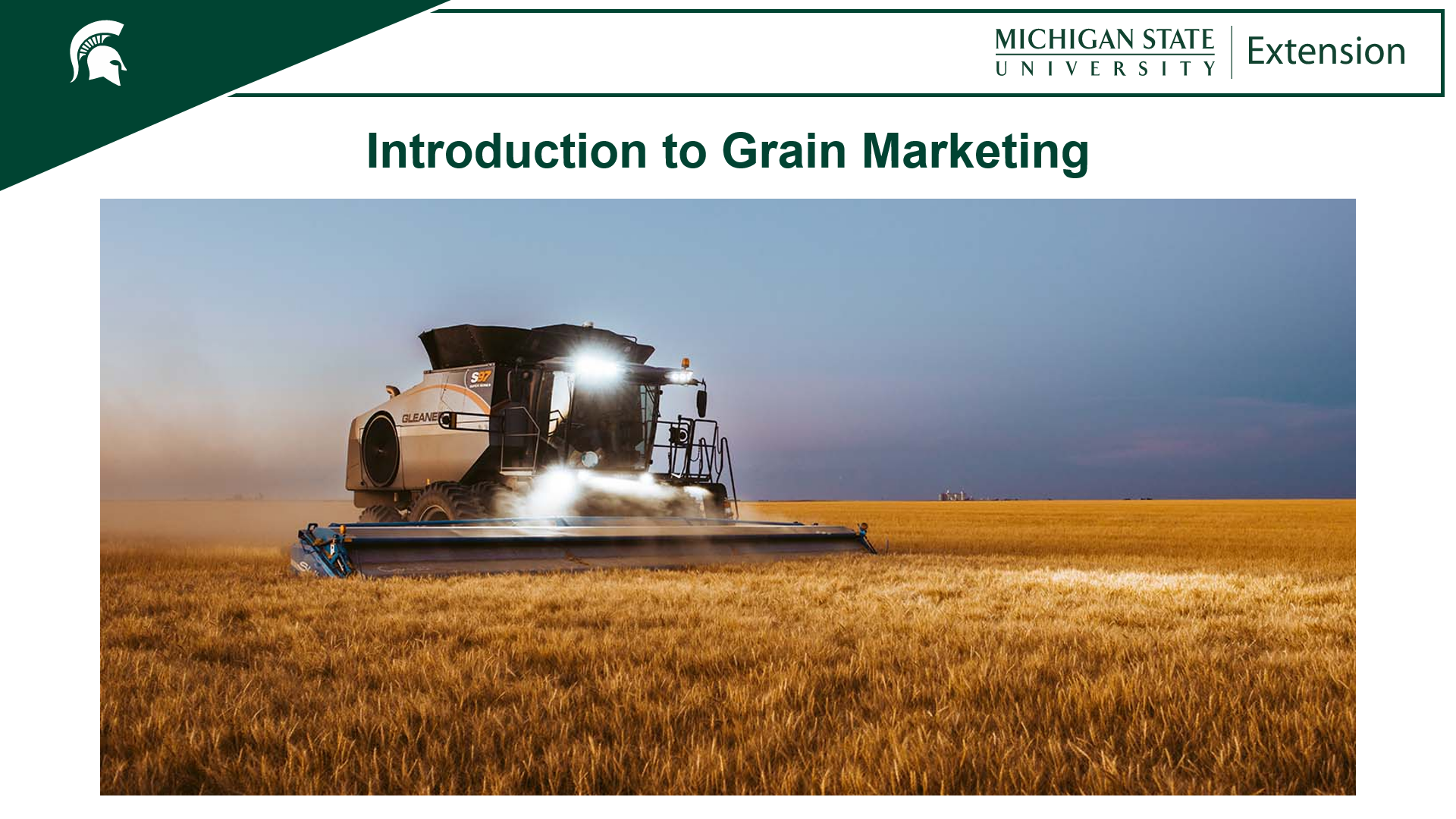
MSU Grain Marketing Plan Template
DOWNLOADMay 17, 2024 - Jonathan LaPorte
Updated on 8-10-2025, the MSU Grain Marketing Plan Template is designed to help in developing a proactive strategy to price and sell your farm’s grain production.
The template incorporates many of the key concepts from MSU Bulletin E-3416: Introduction to Grain Marketing. Several concepts include identifying the two types of marketing plans:
- A pre-harvest plan, and
- A post-harvest plan
A pre-harvest plan is considered to be more strategic in nature, because the window to begin pricing grain before harvest is so large. The futures market by definition is looking to the future sales and expected production over the course of multiple years. This provides an opportunity to price grain several seasons before you intend to grow it.
A post-harvest plan is considered more tactical in nature because you have to respond to the market environment. Carrying charges, local basis, and size of the local grain harvest can influence the pricing opportunities in your area. This is information that you won’t have available prior to harvest and your strategies to respond to these situations will be different.
The template provides a description of key concepts associated with each plan and instructions on how to navigate use of the template itself:
Pre-Harvest (Strategic) Plan Tab:
- Enter year of plan, expected production, desired market plan goals, and bushel objectives, target prices, pricing decision tools, and decision deadlines.
- Entry area for provisions of early sales if market conditions meet expectations or how to consider approaching sales when considering prices at decision deadlines is also provided.
- An example is provided and can be easily removed for individual farm use.
Post-Harvest (Tactical) Plan Tab:
- Enter year of plan, expected production to sell, desired market plan goals, and bushel objectives.
- Bushel objectives focus on quantities per sale, pricing decision tools to use, and a description of pricing targets and decision deadlines as part of an exit strategy.
- An example is provided and can be easily removed for individual farm use.
Full-Season Plan Tab: (New 8-10-2025)
- Enter year of plan, expected production, desired market plan goals, and bushel objectives, target prices, pricing decision tools, and decision deadlines.
- Formulas are used in some cells to auto-calculate values but can simply be replaced by typing new values.
- An example is provided for additional instruction on individual farm use.
Price Tracker Tab:
- Enter total production to be marketed for the year.
- Track quantities of grain sold and prices received.
- Tab calculates a running average price per bushel received and amount of remaining production unpriced.
- An example is provided and can be easily removed for individual farm use.
Other related resources also available from MSU Extension:



 Print
Print Email
Email





